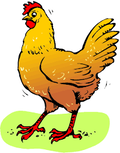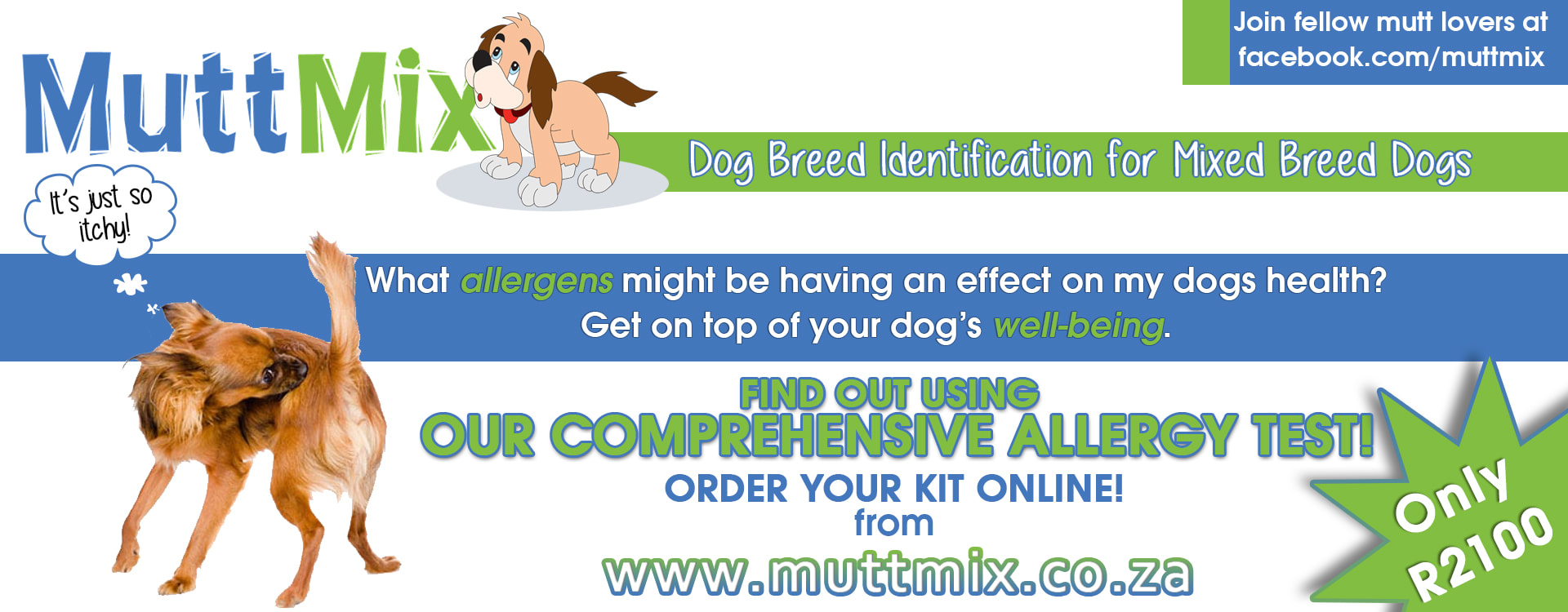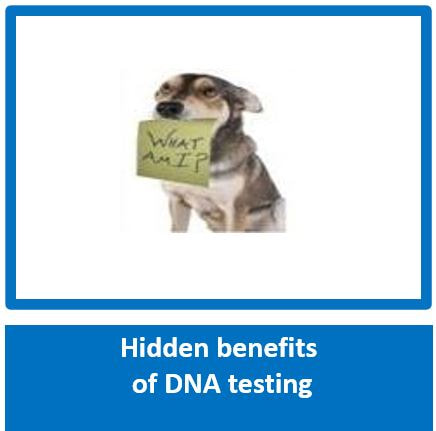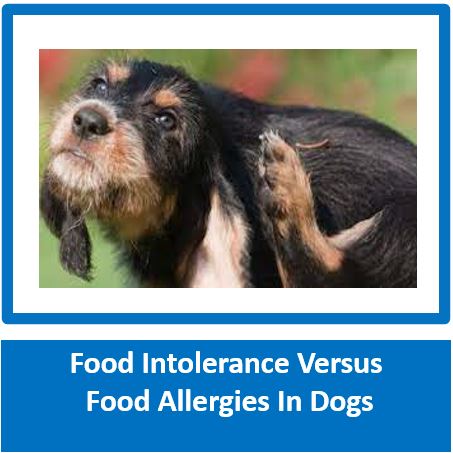Poultry allergies in dogs - all you need to know

What are Poultry Allergies?
Poultry can include meats like chicken, one of the most common food allergens for dogs, as well as options like duck which has lower incidences of allergic reactions. Food allergies can cause distressing skin conditions in canines as well as chronic disorders such as indigestion, ear infections, and breathing troubles. Allergies are due to an abnormally high defensive response to a protein, in this case, a type of poultry, which the immune system perceives as an intrusive substance. Foods are broken down into amino acids by the digestive system, and the amino acids are then absorbed by enterocytes, a type of white blood cell. If the digestive system doesn’t completely break down the proteins, the enterocytes see them as intruders and attack the body.
An allergy to poultry is an over-reaction of your dog's immune system to an unwelcome protein, in this case, a poultry protein, that is present in a particular ingredient of their diet.
Symptoms of Poultry Allergies in Dogs
Allergies to food usually occur in adult dogs, over the age of three. There are exceptions, and a food allergy can have a detrimental effect on a young dog's growth if not addressed. Skin reactions are usually more concentrated around the face, groin, toes, and under the front legs.
Types
If your dog has developed an allergy to a particular poultry, other avian options may still be available. Several types of poultry can be included in your dog’s food. The three most common poultry sources are:
Chicken - This is by far the most common poultry ingredient in dog foods and is also the most likely to induce allergies in canines.
Duck - Often used as an alternative poultry for those canines with chicken or turkey sensitivities as it has a lower incidence of allergic reactions.
Turkey - Turkey is sometimes used as an inexpensive alternative to chicken. Although it is less allergenic than chicken, allergies are somewhat more widespread to turkey than to the more exotic choices.
Incidences to more exotic avian proteins are less frequent, but they do happen. These types of proteins could include any of the following:
Emu
Goose
Ostrich
Pheasant
Quail
Squab
Poultry can include meats like chicken, one of the most common food allergens for dogs, as well as options like duck which has lower incidences of allergic reactions. Food allergies can cause distressing skin conditions in canines as well as chronic disorders such as indigestion, ear infections, and breathing troubles. Allergies are due to an abnormally high defensive response to a protein, in this case, a type of poultry, which the immune system perceives as an intrusive substance. Foods are broken down into amino acids by the digestive system, and the amino acids are then absorbed by enterocytes, a type of white blood cell. If the digestive system doesn’t completely break down the proteins, the enterocytes see them as intruders and attack the body.
An allergy to poultry is an over-reaction of your dog's immune system to an unwelcome protein, in this case, a poultry protein, that is present in a particular ingredient of their diet.
Symptoms of Poultry Allergies in Dogs
Allergies to food usually occur in adult dogs, over the age of three. There are exceptions, and a food allergy can have a detrimental effect on a young dog's growth if not addressed. Skin reactions are usually more concentrated around the face, groin, toes, and under the front legs.
- Bald patches
- Chronic ear infections
- Chronic gas
- Chronically inflamed feet
- Coughing
- Diarrhea
- Hives
- Obsessive licking
- Paw biting
- Pawing at face
- Poor growth (puppy and adolescent)
- Shaking of the head
- Skin infections
- Skin rashes
- Vomiting
- Wheezing
Types
If your dog has developed an allergy to a particular poultry, other avian options may still be available. Several types of poultry can be included in your dog’s food. The three most common poultry sources are:
Chicken - This is by far the most common poultry ingredient in dog foods and is also the most likely to induce allergies in canines.
Duck - Often used as an alternative poultry for those canines with chicken or turkey sensitivities as it has a lower incidence of allergic reactions.
Turkey - Turkey is sometimes used as an inexpensive alternative to chicken. Although it is less allergenic than chicken, allergies are somewhat more widespread to turkey than to the more exotic choices.
Incidences to more exotic avian proteins are less frequent, but they do happen. These types of proteins could include any of the following:
Emu
Goose
Ostrich
Pheasant
Quail
Squab
Causes of Poultry Allergies in Dogs
Food allergy - An allergy to food is a self-defense response by the immune system to an amino acid that it perceives as a threat. An allergic reaction doesn’t happen the first time an individual is exposed to the allergen as the immune system has to encounter the protein more than once for enough enterocytes to recognize it as an invader. If your pet is showing an intolerance to a particular food, it may indicate that an allergy is in the process of developing. Any individual ingredient can cause an allergic reaction, but certain foods, including chicken, dairy, beef, and egg products, tend to induce canine allergies more often than others.
Food intolerance - Food intolerance is different from a food allergy because the reactions in food intolerance are not caused by histamine. Additional symptoms, including changes in the consistency or color of the stools, gurgling sounds from the digestive system, and abdominal pain, are common with a food intolerance. Food intolerance, although different from an allergy, can lead to allergies as the intolerance may cause the food to be improperly broken down by the digestive system.
Diagnosis of Poultry Allergies in Dogs
The symptoms of food allergy in canines show up mostly on the skin and will prompt your veterinarian to perform a cutaneous cytology to diagnose the issue. Cutaneous cytology is a procedure in which the affected skin cells collected and then examined microscopically for signs of disease, yeast infections, or mites. Your veterinarian may suggest the most common diagnostic tool for confirming and later pinpointing food allergies, which is an elimination diet. During an elimination diet, the dog’s food regimen will be switched to reduced ingredient commercial foods or unseasoned human grade food. Proteins and carbohydrates that are not included in the dog’s current food, referred to as novel ingredients, are generally the best choice for an elimination diet. All of the ingredients in the current food should be avoided when choosing the proper replacement diet. It is important to check the ingredient list for poultry meal, by-products, and flavorings to ensure the possible allergens are completely removed.
Although either poultry or egg allergies often exist separately, it may be wise to remove egg products during an elimination diet as well if an allergy to poultry is suspected, as the proteins can be similar. Properly implemented, an elimination diet should cause the signs and symptoms to disappear after several weeks, at which point additional ingredients will be included into the canine’s diet one at a time until the allergen is uncovered. Ensuring that your dog does not consume anything other than the food used for the elimination diet is a primary concern during this diagnostic treatment. A single treat or leftover with the offending protein can cause the allergy to resurface. Poultry proteins can be found in pet related items as diverse as:
Flavored medications or supplements
Flavored plastic toys
Flavored toothpastes
Pigs Ears
Rawhides
Treats
Treatment of Poultry Allergies in Dogs
During the several weeks that are often required before the elimination diet can reveal the allergen, your pet may continue to experience some symptoms. Corticosteroids and antihistamines can sometimes reduce swelling and control itching, however, many veterinarians prefer to complete the elimination diet before recommending symptomatic treatment. This is because the use of these remedies can also make it harder to determine which component in your dog’s food is causing the allergic reactions by masking visible signs. Once the allergen has been ascertained, the initial course of action is the removal of the ingredient from the dog’s diet.
Supplements, such as Omega-3 oils and probiotics, are often recommended to support the immune system and to protect the skin itself. The additions of these supplements are intended to assist your canine’s body in handling any accidental exposure to allergens as well as to prevent the cultivation of new allergies. Secondary skin infections are also common with canine skin allergies and antibiotics may be prescribed to combat these infections. Although allergies to foods are not strictly curable, signs and symptoms generally disappear with removal of the offending ingredient from their diet. Relapses can occur from even small exposures to the allergen, so it is important that you continue to be vigilant for poultry-related components in ingredient lists. Allergic responses to one type of food will often indicate a predisposition to developing an allergy to the components of the replacement diet as well over time.
Recovery of Poultry Allergies in Dogs
Many types of proteins are suitable as a replacement to poultry in the patient’s diet. Using limited ingredient foods with novel protein sources should relieve the symptoms.
Alternative protein sources for your dog could include one or more of the following:
Broccoli
Buffalo
Eggs
Elk
Fish
Lamb
Lentils
Quinoa
Rabbit
Soybeans
Spinach
Venison
Food allergy - An allergy to food is a self-defense response by the immune system to an amino acid that it perceives as a threat. An allergic reaction doesn’t happen the first time an individual is exposed to the allergen as the immune system has to encounter the protein more than once for enough enterocytes to recognize it as an invader. If your pet is showing an intolerance to a particular food, it may indicate that an allergy is in the process of developing. Any individual ingredient can cause an allergic reaction, but certain foods, including chicken, dairy, beef, and egg products, tend to induce canine allergies more often than others.
Food intolerance - Food intolerance is different from a food allergy because the reactions in food intolerance are not caused by histamine. Additional symptoms, including changes in the consistency or color of the stools, gurgling sounds from the digestive system, and abdominal pain, are common with a food intolerance. Food intolerance, although different from an allergy, can lead to allergies as the intolerance may cause the food to be improperly broken down by the digestive system.
Diagnosis of Poultry Allergies in Dogs
The symptoms of food allergy in canines show up mostly on the skin and will prompt your veterinarian to perform a cutaneous cytology to diagnose the issue. Cutaneous cytology is a procedure in which the affected skin cells collected and then examined microscopically for signs of disease, yeast infections, or mites. Your veterinarian may suggest the most common diagnostic tool for confirming and later pinpointing food allergies, which is an elimination diet. During an elimination diet, the dog’s food regimen will be switched to reduced ingredient commercial foods or unseasoned human grade food. Proteins and carbohydrates that are not included in the dog’s current food, referred to as novel ingredients, are generally the best choice for an elimination diet. All of the ingredients in the current food should be avoided when choosing the proper replacement diet. It is important to check the ingredient list for poultry meal, by-products, and flavorings to ensure the possible allergens are completely removed.
Although either poultry or egg allergies often exist separately, it may be wise to remove egg products during an elimination diet as well if an allergy to poultry is suspected, as the proteins can be similar. Properly implemented, an elimination diet should cause the signs and symptoms to disappear after several weeks, at which point additional ingredients will be included into the canine’s diet one at a time until the allergen is uncovered. Ensuring that your dog does not consume anything other than the food used for the elimination diet is a primary concern during this diagnostic treatment. A single treat or leftover with the offending protein can cause the allergy to resurface. Poultry proteins can be found in pet related items as diverse as:
Flavored medications or supplements
Flavored plastic toys
Flavored toothpastes
Pigs Ears
Rawhides
Treats
Treatment of Poultry Allergies in Dogs
During the several weeks that are often required before the elimination diet can reveal the allergen, your pet may continue to experience some symptoms. Corticosteroids and antihistamines can sometimes reduce swelling and control itching, however, many veterinarians prefer to complete the elimination diet before recommending symptomatic treatment. This is because the use of these remedies can also make it harder to determine which component in your dog’s food is causing the allergic reactions by masking visible signs. Once the allergen has been ascertained, the initial course of action is the removal of the ingredient from the dog’s diet.
Supplements, such as Omega-3 oils and probiotics, are often recommended to support the immune system and to protect the skin itself. The additions of these supplements are intended to assist your canine’s body in handling any accidental exposure to allergens as well as to prevent the cultivation of new allergies. Secondary skin infections are also common with canine skin allergies and antibiotics may be prescribed to combat these infections. Although allergies to foods are not strictly curable, signs and symptoms generally disappear with removal of the offending ingredient from their diet. Relapses can occur from even small exposures to the allergen, so it is important that you continue to be vigilant for poultry-related components in ingredient lists. Allergic responses to one type of food will often indicate a predisposition to developing an allergy to the components of the replacement diet as well over time.
Recovery of Poultry Allergies in Dogs
Many types of proteins are suitable as a replacement to poultry in the patient’s diet. Using limited ingredient foods with novel protein sources should relieve the symptoms.
Alternative protein sources for your dog could include one or more of the following:
Broccoli
Buffalo
Eggs
Elk
Fish
Lamb
Lentils
Quinoa
Rabbit
Soybeans
Spinach
Venison






